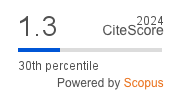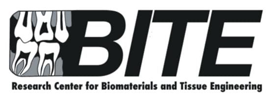Effect of corncob powder concentration on properties of inlay waxes
Downloads
Background: Corncob powder is a promising filler that needs to be assessed when it is incorporated into inlay waxes to modified its properties. Purpose: This study aims to investigate the effect of different concentrations of corncob powder filler on physical and mechanical properties of inlay waxes. Methods: Five groups of inlay waxes were prepared from paraffin, corncob powder, carnauba wax, and beeswax in varying proportions (w/w%), namely, group I (70:0:25:5), II (65:5:25:5), III (60:10:25: 5), IV (55:15:25:5), and V (50:20:25:5). The wax mixture was heated at 80°C, filtered, added with corncob powder, and stirred until homogeneous then poured into mold for melting point, residue on ignition, flow, hardness, and trimming samples. They were based on ANSI/ADA specification no.122 and ASTM D 1321. The data were analyzed through one-way ANOVA, post-hoc LSD, and Tamhane tests (p = 0.05), except trimming test data. Results: One-way ANOVA revealed that the concentration of corncob filler influenced all inlay waxes properties (p<0.05). LSD and Tamhane post-hoc test, showed significant different among mostly between groups of tests. Addition corncob powder increased the melting point, hardness, and residue of inlay waxes but decreased the flow of inlay waxes. Addition corncob did not influence the trimming property of inlay waxes. Conclusion: The concentration of corncob filler added in inlay wax compositions influenced the melting point, flow, hardness and residue properties but did not influence trimming properties. Inlay wax containing 10% corncob filler potential as a local inlay wax, but further research should be done to overcome the residue on ignition property that higher than standards.
Downloads
Badan Kebijakan Pembangunan Kesehatan. Indonesia Health Survey 2023. Jakarta: Kementerian Kesehatan Republik Indonesia; 2023. p. 317–20. web: https://repository.badankebijakan.kemkes.go.id/id/eprint/5538
Prasetyo EP. Anterior makeover on fractured teeth by simple composite resin restoration. Dent J (Majalah Kedokt Gigi). 2011; 44(3): 150–3. doi: https://doi.org/10.20473/j.djmkg.v44.i3.p150-153
Bin Fadly Loo MFLS. Planning for success: Full mouth rehabilitation with different fixed restorations. Dent J. 2025; 58(2): 187–93. doi: https://doi.org/10.20473/j.djmkg.v58.i2.p187-193
Putra AAIDW, Yolanda Y. Full-mouth rehabilitation in a patient with multiple caries: A case report. Dent J. 2024; 57(2): 152–7. doi: https://doi.org/10.20473/j.djmkg.v57.i2.p152-157
Azhar IS, Megantara RWA, Dahlan A. Custom-made ocular prosthesis for rehabilitation of missing parts of the face: A case report. Acta Med Philipp. 2021; 55(8): 833–7. doi: https://doi.org/10.47895/amp.v55i8.2119
Eakle WS, Bastin KG. Dental materials: Clinical application for dental assistants and dental hygienist. 4th ed. St Louis: Elsevier; 2021. p. 385–7. web: https://evolve.elsevier.com/cs/product/9780323596589
Sakaguchi R, Ferracane J, Powers J. Craig’s restorative dental materials. 14th ed. St Louis, Missouri: Mosby Elsevier; 2019. p. 340. doi: https://doi.org/10.1016/C2015-0-01767-1
Widjijono W, Agustiono P, Irnawati D. Mechanical properties of carving wax with various Ca-bentolite filter composition. Dent J (Majalah Kedokt Gigi). 2009; 42(3): 114. doi: https://doi.org/10.20473/j.djmkg.v42.i3.p114-117
Gratzer K, Susilo F, Purnomo D, Fiedler S, Brodschneider R. Challenges for beekeeping in Indonesia with autochthonous and introduced bees. Bee World. 2019; 96(2): 40–4. doi: https://doi.org/10.1080/0005772X.2019.1571211
Sabir A. Respons inflamasi pada pulpa gigi tikus setelah aplikasi ekstrak etanol propolis (EEP) (The inflammatory response on rat dental pulp following ethanolic extract of propolis (EEP) application). Dent J (Majalah Kedokt Gigi). 2005; 38(2): 77–83. doi: https://doi.org/10.20473/j.djmkg.v38.i2.p77-83
Irnawati D, Widjijono, Agustiono P. Pengaruh komposisi malam ukir terhadap titik leleh dan kekerasan. Maj Ilm Kedokt Gigi FKG Trisakti. 2008; 23(3): 15–28. [not available online]
Isnaini F, Irnawati D, Siswomihardjo W. Efek komposisi parafin dan malam lebah terhadap ekspansi termal linier malam model. Dentika Dent J. 2009; 14(1): 7–10. web: https://talenta.usu.ac.id/dentika/article/view/1966
Irnawati D, Widjijono W, Harsini H. Ekspansi termal linier dan residu malam inlei gigi dengan komponen parafin Indonesia. J Teknosains. 2020; 10(1): 1–9. doi: https://doi.org/10.22146/teknosains.46548
Manappallil J. Basic dental materials. 4th ed. New Delhi: Jaypee Brothers Medical Publishers (P) Ltd.; 2016. p. 630. doi: https://doi.org/10.5005/jp/books/12669
Wypych G. Handbook of fillers. 4th ed. Toronto: ChemTec Publishing; 2016. p. 922. web: https://www.sciencedirect.com/book/9781895198911/handbook-of-fillers
Hatim N, Taqa A, Abbas W. Preparation and modifying a new type of waxes. Al-Rafidain Dent J. 2006; 6(1): 64–70. doi: https://doi.org/10.33899/rden.2006.40211
Chidiebere Okorie P, Emaimo J, Otitochukwu Aleke C, Chinonyerem Okoronkwo S, Nwangwu G, Nkemdilim Okeke K, Stellamaris Okonkwo C, Chukwuma Obiano E. Production of dental inlay wax using locally sourced materials in Enugu, Nigeria. Int J Dent Med. 2019; 5(1): 1–8. doi: https://doi.org/10.11648/j.ijdm.20190501.11
Abidalhussein HJ. Biotechnological synthesis of an prostheses dental wax, modeling and stick. IMPACT Int J Res Appl. 2022; 10(3): 37–44. web: https://www.impactjournals.us/archives?jname=14_2&year=2022&submit=Search
Brebu M, Vaselie C. Thermal degradation of lignin – a review. Cellul Chem Technol. 2010; 44(9): 353–63. web: https://cellulosechemtechnol.ro/pdf/CCT9(2010)/P.353-363.pdf
Hua GB. Smart cities as a solution for reducing urban waste and pollution. IGI Global; 2016. p. 362. (Advances in Environmental Engineering and Green Technologies). doi: https://doi.org/10.4018/978-1-5225-0302-6
Onuoha C, Onyemaobi OO, Anyakwo CN, Onuegbu GC. Effect of filler loading and particle size on the mechanical properties of periwinkle shell-filled recycled polypropylene composites. Am J Eng Res. 2017; 6(4): 72–9. web: https://www.ajer.org/papers/v6(04)/J06047279.pdf
McCabe JF, Walls AWG. Applied dental materials. 9th ed. Oxford: Wiley-Blackwell; 2013. p. 320. web: https://www.wiley.com/en-sg/Applied+Dental+Materials%2C+9th+Edition-p-9781118697122
Anusavice K, Shen C, Rawls HR. Phillips’ science of dental materials. 12th ed. Philadelphia: Saunders; 2013. p. 592. web: https://evolve.elsevier.com/cs/product/9781455748136
American National Standard/American Dental Association Specification No. 122. Dental casting and baseplate waxes. Chicago: ANSI/ADA; 2007. web: https://webstore.ansi.org/standards/ADA/ansiadaspecificationnumber122
American Society for Testing and Materials. ASTM D1321-04: Standard test method for needle penetration of petroleum waxes. West Conshohocken, PA: ASTM International; 2004. web: https://store.astm.org/d1321-04.html
Darvell BW. Waxes. In: Materials science for dentistry. 9th ed. Cambridge: Woodhead Publishing Limited; 2009. p. 390–400. doi: https://doi.org/10.1533/9781845696672.390
Rizky IP, Susatyo EB, Susilaningsih E. Aktivasi arang tongkol jagung menggunakan HCl sebagai adsorben ion Cd(II). Indones J Chem Sci. 2016; 5(2): 125–9. web: https://journal.unnes.ac.id/sju/ijcs/article/view/11446
Wahyudi Y, Amrullah S, Oktaviananda C. Uji karakteristik briket berbahan baku bonggol jagung berdasarkan variasi jumlah perekat. J Pengendali Pencemaran Lingkung. 2022; 4(2): 84–90. web: https://ejournal.pnc.ac.id/index.php/jppl/article/view/1479
Copyright (c) 2025 Dental Journal

This work is licensed under a Creative Commons Attribution-ShareAlike 4.0 International License.
- Every manuscript submitted to must observe the policy and terms set by the Dental Journal (Majalah Kedokteran Gigi).
- Publication rights to manuscript content published by the Dental Journal (Majalah Kedokteran Gigi) is owned by the journal with the consent and approval of the author(s) concerned.
- Full texts of electronically published manuscripts can be accessed free of charge and used according to the license shown below.
- The Dental Journal (Majalah Kedokteran Gigi) is licensed under a Creative Commons Attribution-ShareAlike 4.0 International License

















